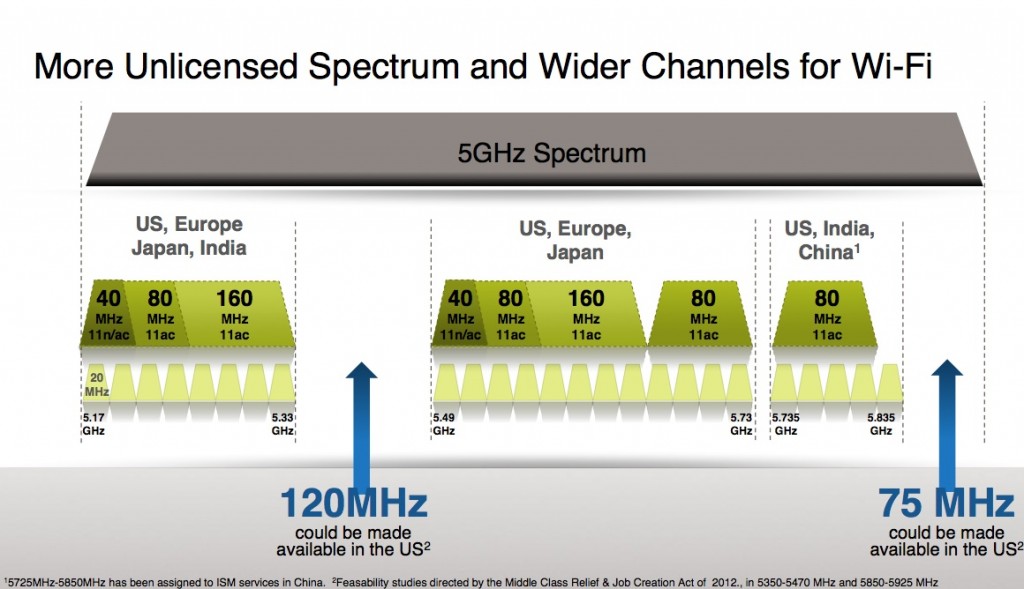FCC Chairman Julius Genachowski yesterday announced an initiative to make 195 MHz of more spectrum available for Wi-Fi in the 5 GHz band.
The last time more spectrum for Wi-Fi was made available in this range was in 2003, when an FCC increased the then 300 MHz bandwidth to 555 MHz. As the document in that last link shows, the 5 GHz band is not as neat as the 2.4 GHz band, with other services, such as radar, requiring protection. These coexistence issues will have to be looked at again.
This initiative stems from the Middle Class Relief & Job Creation Act of 2012 (the incentive auction legislation). As a vendor increasingly involved in unlicensed wireless services, Qualcomm supports this effort. It’s a proponent of IEEE 802.11ac, which can use channels up to 160 MHz wide. The company prepared the following graphic showing how 802.11ac channelization can work with existing allocations, and how more and wider channels (and thus more capacity) could be made available with the additional 195 MHz the FCC is proposing. (Click to enlarge.)
Though Genachowski’s emphasis is on Wi-Fi, this new spectrum might also become available to other devices that operate on unlicensed frequencies, such as the IEEE 802.15 family of technologies (Bluetooth, ZigBee, smart meters, etc.). Any coexistence issues with Wi-Fi would be dealt with within IEEE 802.